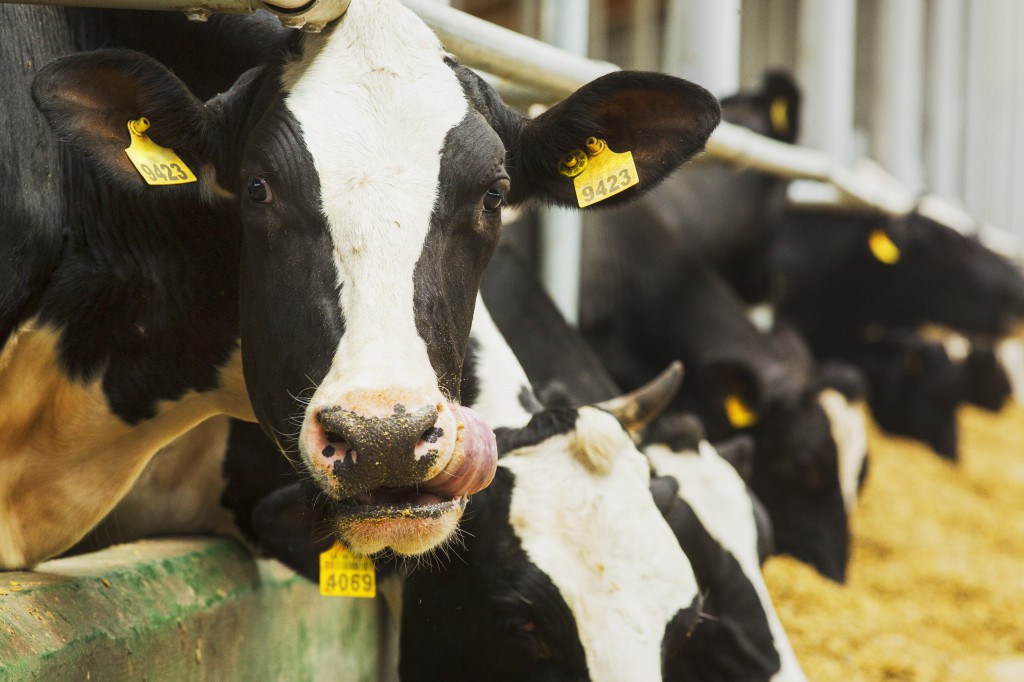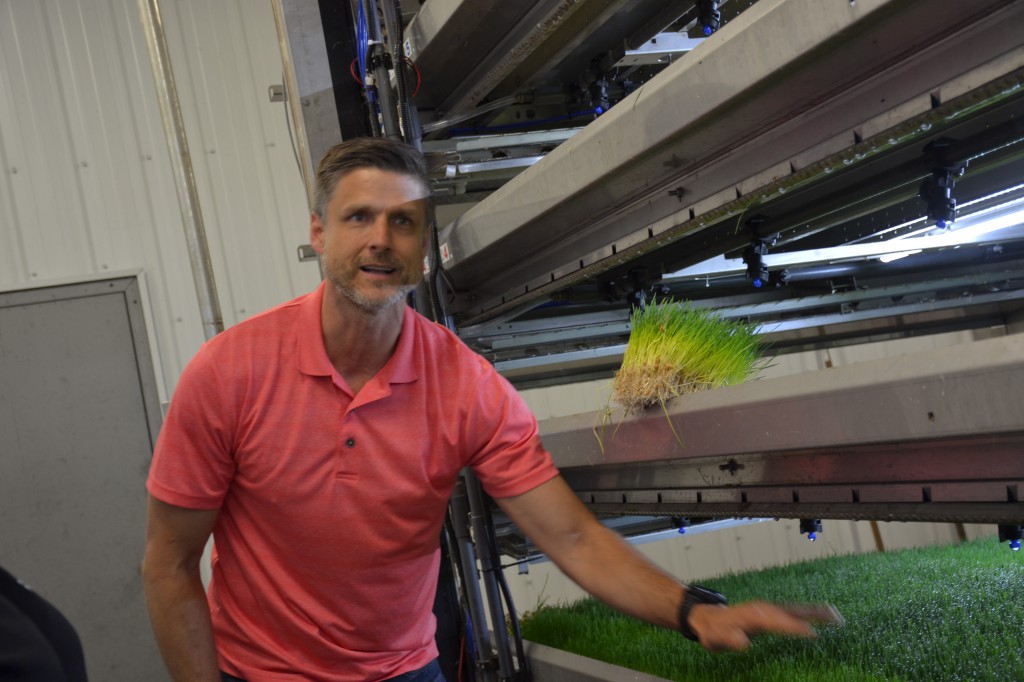New System Delivers More Nutrients
By Ronda Payne

Bakerview Dairy in Abbotsford is perhaps one of the best known dairies in the community because of the constant innovation that goes into the operation. Of course, the Bakerview EcoDairy (a non-profit society that works in tandem with Science World to welcome guests to witness a modern dairy) increases the awareness too.
Not one to sit on his laurels, Bill Vanderkooi, owner of Bakerview, has another new project growing. This time it’s hydroponically-grown forage grass that delivers more nutrients in less space and time.
“Our farm has a lot going on,” Vanderkooi’s wife Helinda says. “Our past, present and future depends on agriculture.”
It was looking towards that future and understanding the dramatically increasing prices of farmland in the Fraser Valley that prompted Vanderkooi to consider the hydroponic solution. He pegs the price of farmland as just shy of about $100,000 an acre. For a dairy or other livestock operation to grow forage, that price can simply be too steep—not to mention the challenges of finding suitable available land to do so.
“I heard of the company HydroGreen from a friend of mine, Dave VanBelle of VanBelle Nursery,” notes Vanderkooi. “He was visiting the area [South Dakota] and saw a write-up on the company and decided to visit them. He came back with some information that he forwarded to me.”
Initially, Vanderkooi wasn’t sure if a six-day grass-growing platform for barley or wheat grass would be cost-effective, but he reviewed the data and felt there was a case to be made for the practicality. The other hurdle was to convince the team at HydroGreen to join forces with Bakerview—no small feat considering the operation in South Dakota wanted to only provide the system to those within 150 miles of Sioux Falls
Vanderkooi went to Sioux Falls to look at the concept and get a better understanding of the elements involved in taking seed and water and turning it into a nutrient-rich food source.
“I convinced [HydroGreen] that Nutriva Group is a great organization to work with and that the Fraser Valley is a unique market,” Vanderkooi says. “[They] agreed to come for a visit and [were] convinced to make an exception [to the 150 mile desire].”
Things fell into place and in August 2017, Bakerview became a pilot project of sorts as the first Canadian location to use the system. A recent upgrade worked out the initial bugs which helped HydroGreen with system testing, feedback and suggestions for improvement. The initial install took five days with four people and the upgrade required two days with four people.
“Now, I feel like the system is working very well,” notes Vanderkooi. “It’s just-in-time production. It’s very simple, yet very robust.”

Housed in a climate-controlled 800 square foot building, each individual grass-growing system consists of six platforms. One for each day. On day one, seed is put in place, by day six that seed has sprouted and grown into what Vanderkooi feels is an unmatched nutrient profile grass. By having six trays in a six-day rotation, grass is available every day to feed the farm’s grass-fed beef during their finishing diet. He sees potential to use the grass for dairy cow feed as well and plans to expand the growing space to allow for more individual systems.
“This 800 square feet replaces 20 acres of production because it runs 24/7 and is tiered. We’re excited to be expanding this,” he says. “There is definitely application for grass-fed dairy, organic and conventional. In six days you’re going from raw seed to feed.”
The system is almost fully automated with temperature, light and humidity control of the building and the pressure washer-system that cuts harvested grass. While sprouted grass isn’t a new concept, growing it in an automated, large-scale system is. There is no chemical or fertilizer input. It’s strictly seed and water.
“Hydroponic grass is consistent and highly nutritious,” Vanderkooi explains. “The cost is very comparable to imported feed such as alfalfa and much cheaper if you compared to buying land in the Fraser Valley.”
The nutrient profile of the grass comes primarily from the seed and Vanderkooi says the finished product is 18 per cent protein. He sees it as a hybrid between grain and forage. If replacing forage, farmers may need to add more fibre—usually in the way of chopped straw—to the diet.
Capital costs for Bakerview included the HydroGreen system and climate control within the building. Vanderkooi has established HydroGreen West to be an exclusive distributor of the systems in Western Canada.












